THE BRIDGES OF MULTNOMAH COUNTY
Portland (part of Multnomah county) has a number of unique and historic bridges.
Several are over 100 years old and include the Steel Bridge (the only double deck independently operated bridge in the country), the Broadway Bridge (only 4 other Rall type bascule bridge in the US) and of course the St. Johns bridge.
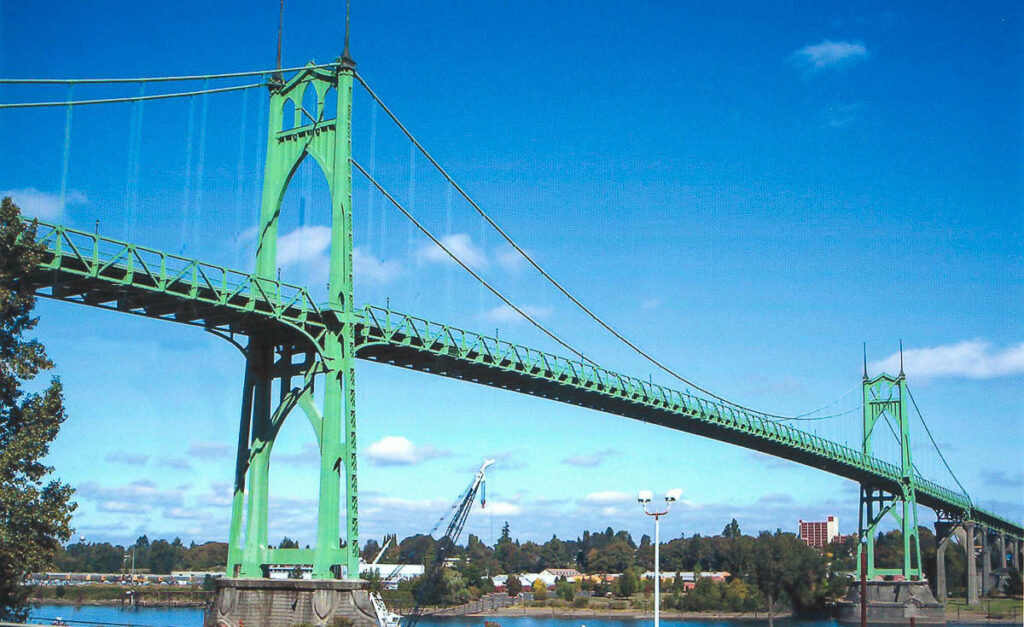

I’m sure that’s where he got the inspiration for the arches in the St. Johns.
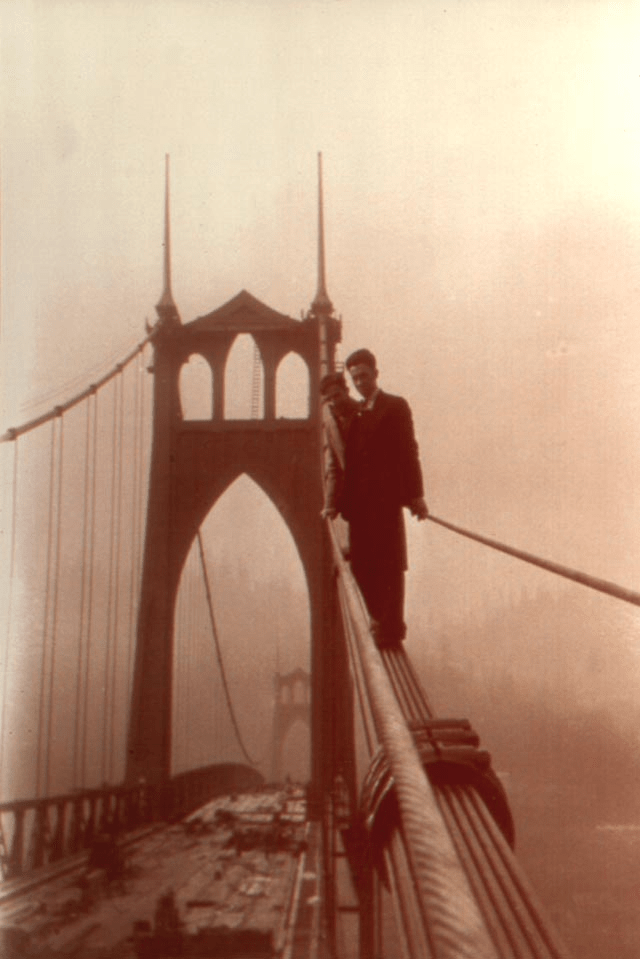
So how do you build a suspension bridge? Start with the 2 towers.
The towers sit on a foundation that’s below the water line. I don’t have any info on that yet so let’s go straight to the towers. They erected a tall scaffold- you can just see the boom of the crane atop the scaffold. They used this crane to lift the steel members piece by piece to build the tower.
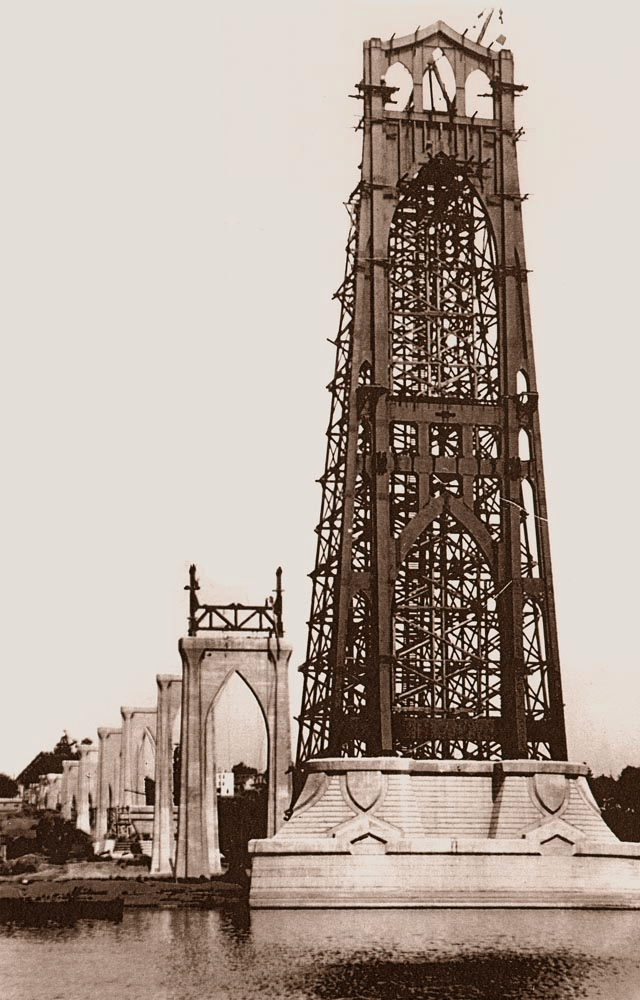
What’s next? the main cables- usually just 2. The main cables hold up the suspenders which hold up the deck.
In this photo from 1929 you’ll see the 2 main cables and the vertical suspenders hanging down.

But back to the main cables. They look like solid steel lengths of cable. The Golden Gate’s are 37″ in diameter.
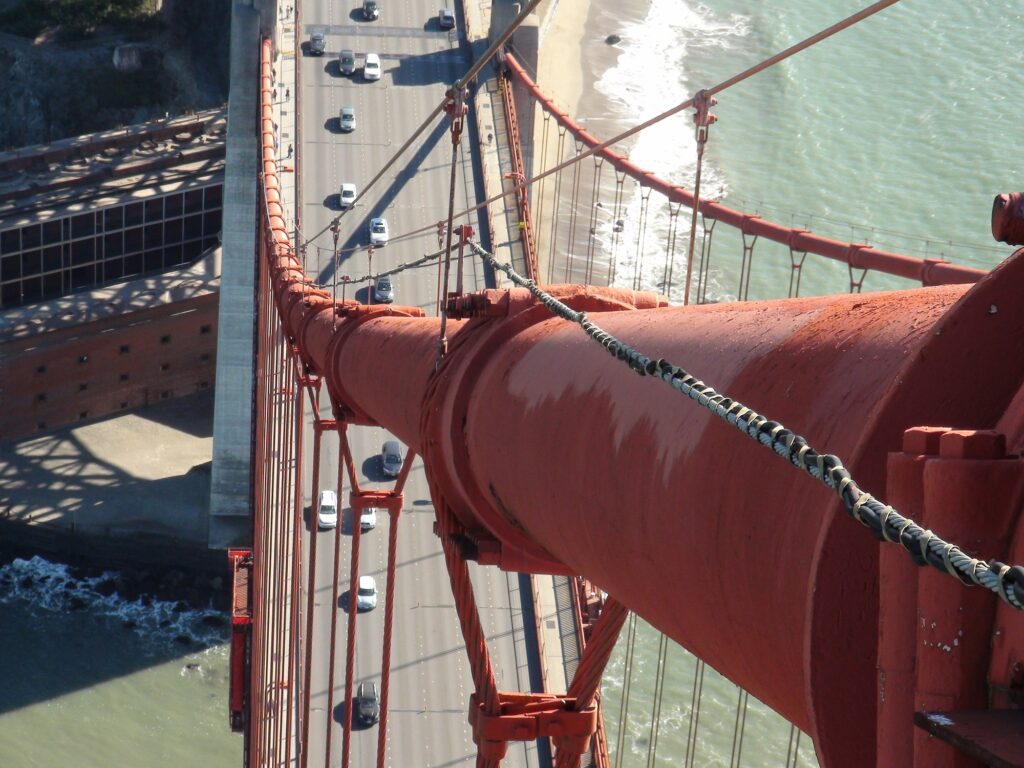
but in reality they’re composed of thousands of small ( 5mm) wires.
Over 27,000 wires in the Golden Gate cable..
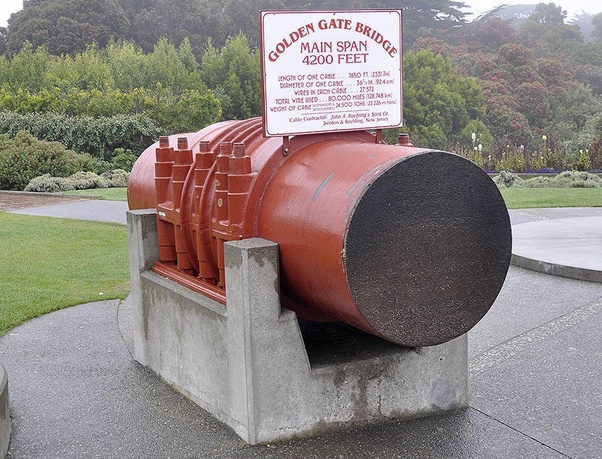
The Tri-borough bridge is in New York. I visited years ago while they were checking on the condition of the thousands of wires in the main cables ( the bridge was built in the 1930s). To do that they first had to un wrap the cables. (more about that later). Then they pounded plastic wedges into the mass of the cable to separate the individual wires so they could inspect them.
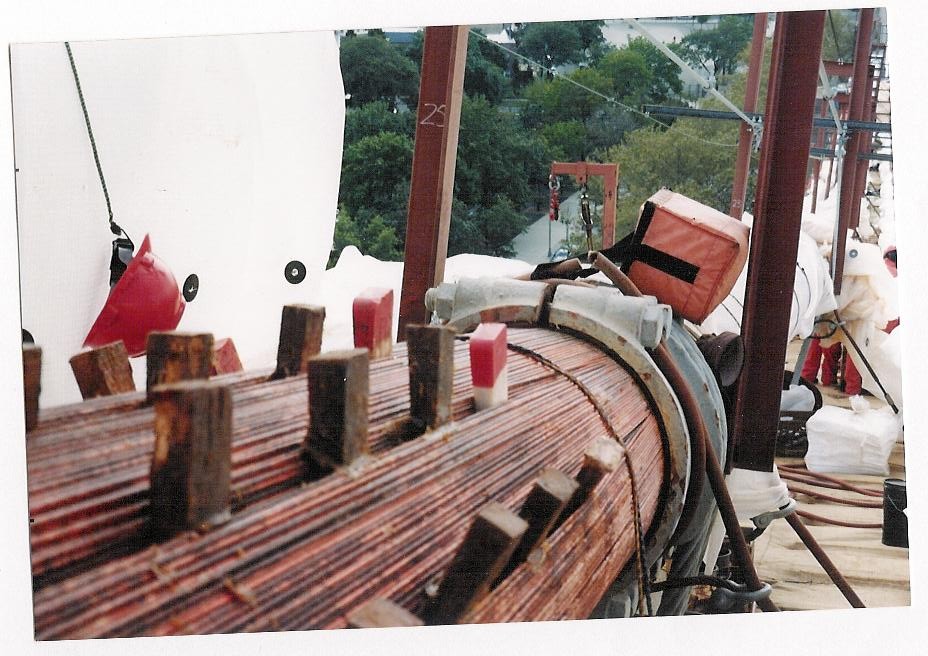
They were cutting out some of the rusted wires and replacing them with new ones.
Here’s one of the rusty wires.
Next question my students always ask.- How do they get all those thousands of wires across the river from 1 tower to the other- and also how do they get the very first wire across.
Nowadays they usually drop a cable from the top of one of the towers into the river-then a boat takes it across to the base of the 2nd tower. They can lower a rope down from the top of this tower- connect it to the cable haul it up and presto you have the first wire across the river.
But how did they do that around 1850 when they were building a suspension bridge at Niagra Falls?
The water was way to dangerous for a boat to transfer the cable across the river. They came up with a great PR stunt. They offered $5 to the first boy who could get a line (rope, string, ??) across. Now in 1850 $5 was a lot of money. My students came up with lots of ideas-use a rifle and somehow attach a rope to the bullet- same idea but using a bow and arrow. But the distance across was almost 1000 feet so none of those would have worked. I then told the kids that the solution was cheap and simple and something a young boy could accomplish—-Homan Walsh was the kid and he simply flew his kite across the river.
After the initial line, the next job is to transfer many thousands of the small (5 mm) wires across from 1 anchorage, up and over the tower, then drooping down, then up and over the second tower and finally connecting to the 2nd anchorage. What’s an anchorage?
I’ll explain after we complete the main cables .Let’s take the Golden Gate bridge as our example. George Roebling (Brooklyn Bridge) invented the aerial spinning technique. The first step is to erect a cat walk- one for each main cable.

I’m standing on the cat walk next to the newly finished main cable.
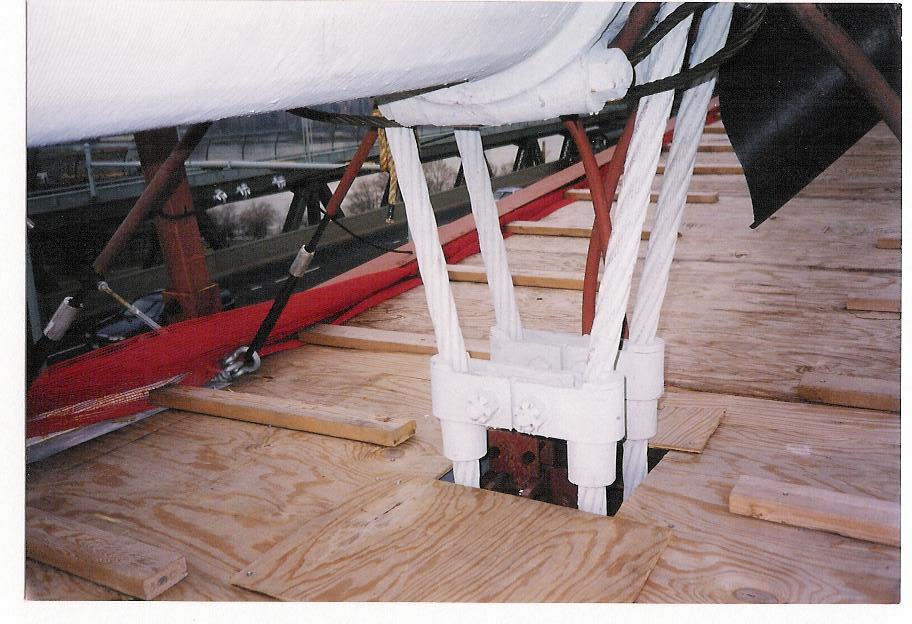
Here’s a better view.-They use plywood with short lengths of 2x4s.

As the cat walk approaches the deck, it’s pretty easy to walk on.
But as the cat walk approaches the tower, the angle of the walk gets pretty steep- the 2x4s made it safer to walk up the incline.
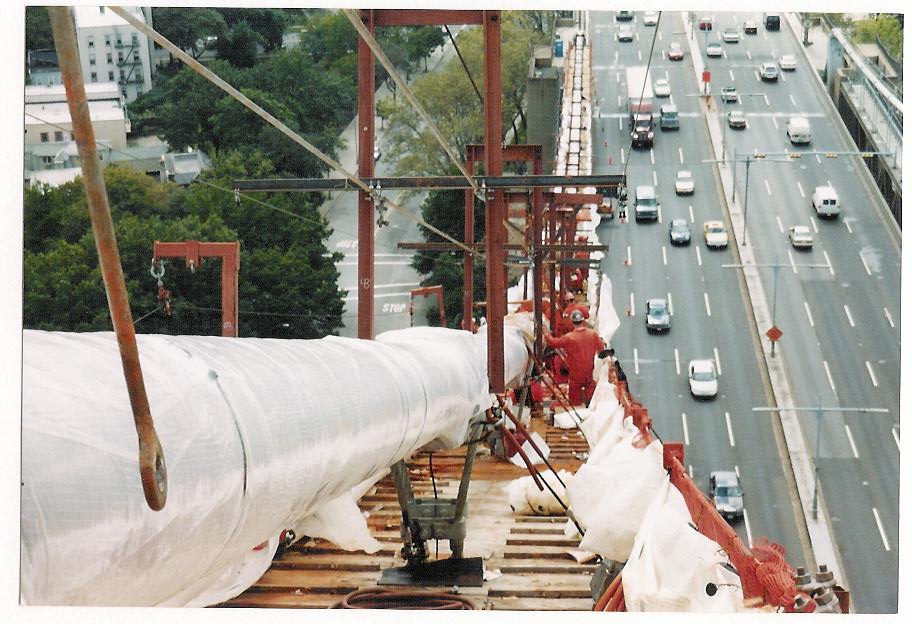
It got pretty steep here so I was glad they had the 2x4s.
This photo was shot around 1930 on the St. Johns Bridge
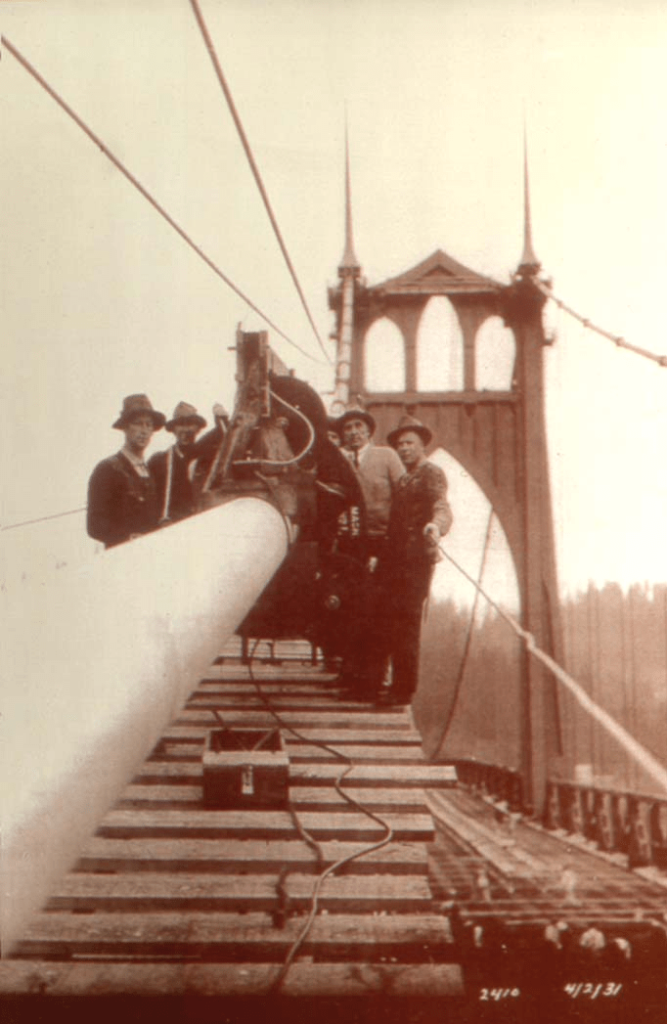
There’s the same wooden cat walk with 2x4s but notice the lack of safety railing or even hard hats.
So now we’ve got the cat walk up and we can start “spinning the ” cable.